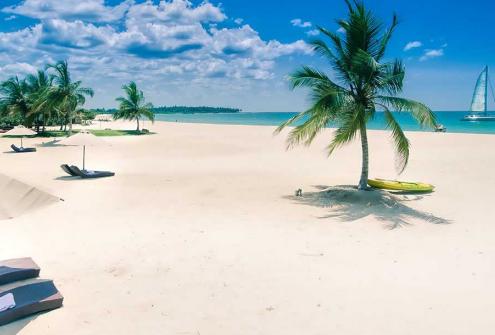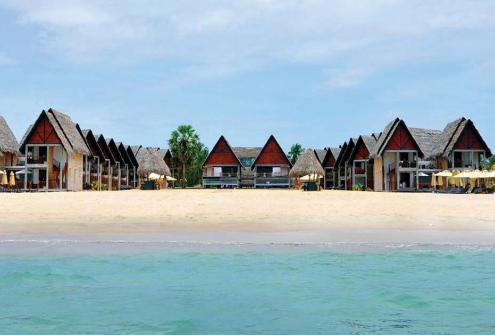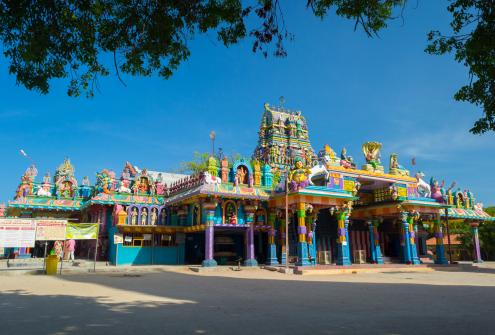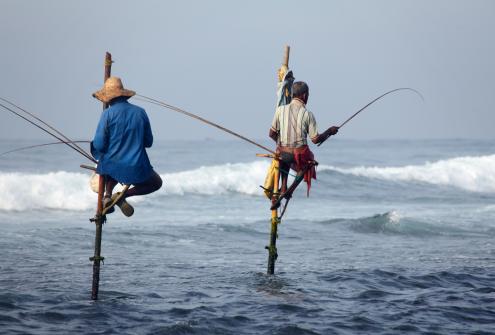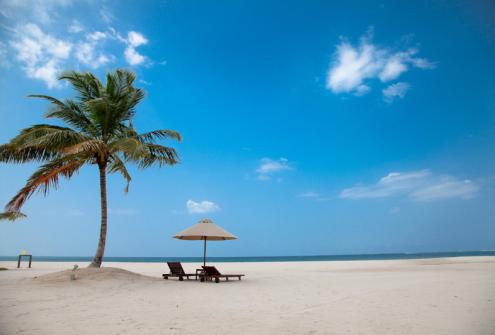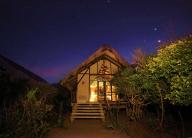Best Time to Visit: June-Sept ; ill advised: Jan/Feb
A mellow, emerging region, there's near-zero package tourism here – most places to stay are family-run guesthouses and small hotels. Still a little raw around the edges, the East remains primarily a land of fishing villages, sandy lanes, chickens in the yard and tradition. It's a culturally fascinating combination of ocean-orientated Muslim communities, astonishing Hindu temples, crumbling colonial forts, dazzling markets and a coastline of killer surf, hidden bays and stretch-for-miles white sand beaches.
Trincomalee
Trincomalee (Trinco) had a rough time in the war, as did most of the north and east of the island, but this fascinating town is beginning to thrive again. Sitting on one the world’s finest natural harbours, Trincomalee is old almost beyond reckoning: it’s possibly the site of historic Gokana in the Mahavamsa (Great Chronicle), and its Shiva temple the site of Trikuta Hill in the Hindu text Vayu Purana. Most people just pass through the city on their way to the nearby beaches of Uppuveli and Nilaveli, but the town has some charm, lots of history and an interesting melange of people.
Trincomalee’s superb deep-water port has made it the target for all manner of attacks over the centuries: by the British takeover in 1795, the city had changed colonial hands seven times. Today the Sri Lankan armed forces control Fort Frederick, along with the British-built airfield China Bay, to the south.
Another notable destination in the North East is Passikudah, which is a small coastal village situated in the east of Sri Lanka about 35km from Batticaloa. It is famous for its golden bay and clear, shallow waters in which you can wade 50m out to sea. It is a virgin beach and renowned throughout the country for its beauty.
From here you can visit Batticaloa, which is home to a historic Dutch Fort and a lagoon that reportedly has singing fish in it. If you are a keen diver, then there are some excellent diving spots, including the wreck of the HMS Hermes, a WW2 British naval ship. You can also enjoy exploring the Maduru Oya National Park where you have a good chance of seeing elephants as well as Hindu temples and the ancient city of Polonnaruwa.
Kalkudah & Passekudah
These spectacular back-to-back beaches, 34km north of Batticaloa, present as stark a juxtaposition as you could imagine.
On one side of a narrow peninsula, the breathtaking white sands of sickle-shaped Passekudah beach are being developed as a kind of mini-Cancun, a government-driven 'Special Economic Zone' with 14 luxury hotels ultimately planned to ring the bay. Fishermen have also been ordered to move their boats away from the main beach. Sure, it's a glorious stretch of sand, but for the next few years the immediate surrounds are a mess, resembling a building site, as edifices in various stages of construction emerge from scrubland.
Passekudah's extremely shallow water heats up to bathtub temperatures on sunny days (you'll have to wade out some distance for a good swim). There's also lots of sharp coral mixed in with the sand, so take care if barefoot. You’ll often find busloads of Sinhalese tourists here; try walking north along the shore to avoid the crowds.
In contrast, Kalkudah beach, 2km away over the headland to the south, is deserted – save the odd fisherman and his boat. This fabulous stretch of golden sand was once lined with hotels, but these were destroyed in the civil war and 2004 tsunami. There's little shade, but it's a delight to explore; just wander along the shore until you find your own private patch of sand.
Batticaloa
Batticaloa is a major city in the Eastern Province, Sri Lanka, and its former capital. It is the administrative capital of the Batticaloa District. The city is the seat of the Eastern University of Sri Lanka and is a major commercial city. It is on the east coast, a bit over 100kms south of Trincomalee. Situated half on an island in a vast lagoon and across a short bridge to the mainland. Coastal beaches north of the lagoon entrance are popular tourist destinations. Locals regard the lagoon as home to the Singing Fish. The city itself has fewer Tourists, Hotels and Tuk Tuks than Trincomalee. You dont get pestered by the Tuk-Tuk drivers. Hotels price are generally cheaper. The sheltered location makes for less cooling wind than right on the coast. Days can get very sultry during the South-West Monsoon. That said, the friendly people and picturesque lagoon views and good city parks make walking a pleasure.




